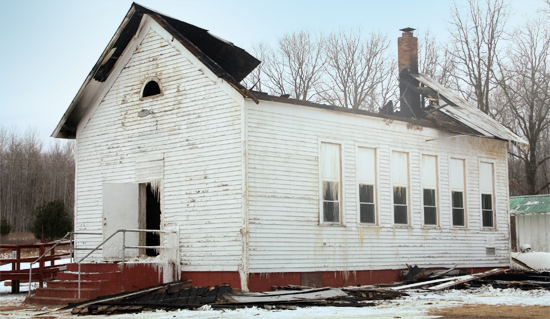
June-July 2013
God's Hands
------------------
|

Risk Management for Churches
by John Brummitt
When you hear the term risk what do you picture? If you think of the stock market, you might picture red in the earnings column. If you are young and adventurous, you might think of skydiving, bungee jumping, or some other extreme sporting event. Few of us think of our church when considering risk.
Risk and risk management are business terms that deal with protecting assets from probable losses. Insurance policies protect companies from losses in the business world. But before you stop reading this article because you think this is a sales pitch, let me assure you, it’s not.
Insurance is only one small step toward protecting assets. Unfortunately, for many churches, that is the only step toward risk management. Why is it important to minimize risk for your church? In today’s world the church and other religious organizations are no longer held in high regard. In this antagonistic environment, it is vital to identify your church’s risk level and prepare for the worst.
The United States is home to over 400,000 churches or places of worship, and over 140 million Americans have some type of connection to those churches. Of those churches and congregations, only 1,200 of them have congregations of 2,000 or more. We often refer to these as “mega-churches.” In contrast to these mammoth churches, however, the average church only has about 75 active attendees and one staff member, usually the pastor. In most cases, pastors are trained in biblical studies—not business, insurance, or risk management. So, to whom does the risk management of your church fall? You guessed it, the members! So how do church members protect their church from risk?
Prepare for Property Loss
Start with the obvious: property loss. Minimize the risk by carrying sufficient insurance to replace the building or buildings in which you meet. You don’t want the ministry disrupted because your building is destroyed or unusable. Remember that replacement insurance often goes above the appraisal value of your building, taking into account the latest building codes and disability requirements.
Limit Liability
Next, consider liability risks. Liability for churches comes in many different forms, but for the sake of this brief overview, we will touch on a handful of common liability risks a church faces. For example: negligent operation of a vehicle (think church bus ministry), defamation, fraud, copyright infringement, and wrongful termination of employees.
Today churches are most likely to be sued over property disputes, sexual misconduct involving a child, employment-related disputes, zoning issues, and personal injuries at church functions or on church property. Based on a study of all churches in the United States, lawsuits against your church, whether won or lost, have devastating effects on the ministry. Churches can be sued, even if they don’t know they have caused something to happen. Failure to react to the lawsuit in a timely fashion can result in a default judgment against the church.
Liability insurance and church incorporation help protect church members, but churches should also be diligent in areas like screening volunteers who work with children, undergoing regular financial audits, developing “safe church” policies, and following proper hiring practices for employees. These steps will help guard the church from lawsuits over negligence.
Value Volunteers
Churches face a unique problem. They rely heavily on volunteers. As stated earlier, the average church has one staff member, so when faithful servants of the church leave because of a job change, to move closer to family, or because their feelings have been hurt, they leave a huge hole in the church workforce. It is often very difficult to replace these valuable members of a volunteer team.
Protecting the church from this type of loss is daunting, but two practical steps can help minimize the damage caused by lost volunteers. First, churches should involve multiple members at every volunteer position so the ministry of the church does not screech to a grinding halt when someone leaves the congregation. Second, communicate clearly to your volunteers the importance of their service. Make it clear they are a treasured part of the ministry team.
Evaluate Economics
One last area of risk for the church involves external economic forces. Churches have just endured one of the worst recessions in U.S. history, and many economists believe we haven’t fully recovered. As the economy drops, so does the weekly income at church. It is crucial to implement a strategic plan for managing financial challenges. This plan will differ for every church. From relying more heavily on volunteer staff to creating awareness about financial needs in the congregations and community, every church should have a plan of action for enduring challenging economic situations.
While this short article only identifies a few of the risks to which churches are exposed, hopefully it will help your church begin thinking about steps it can take to manage risk. Major losses—from property and personnel to finances and reputation—seriously affect the effectiveness of your church. As church members, we must work together to become effective risk managers, not only for the church’s building, but also the church’s ministry.
About the Writer: John Brummitt graduated in 2011 with an MBA from Tennessee Tech University. A 2004 graduate of Welch College, he has been with the Board of Retirement since the spring of 2006.
|
|

